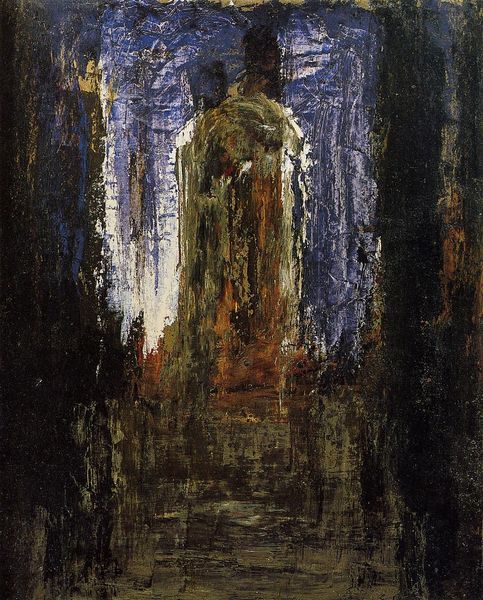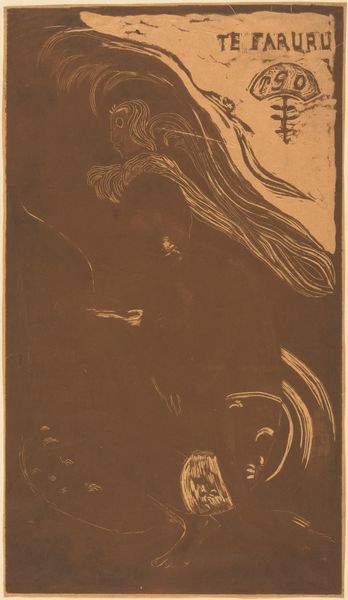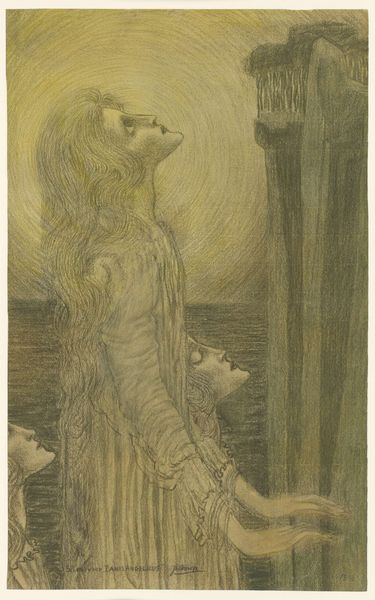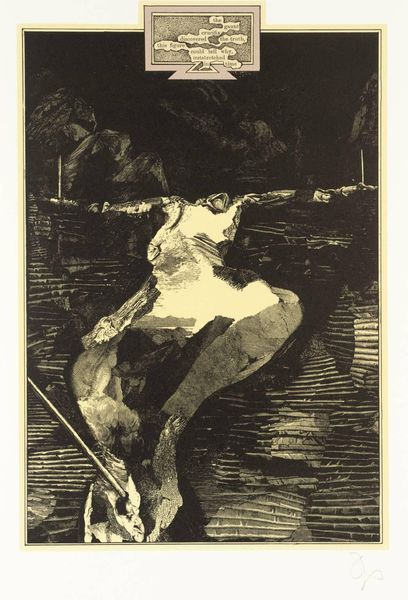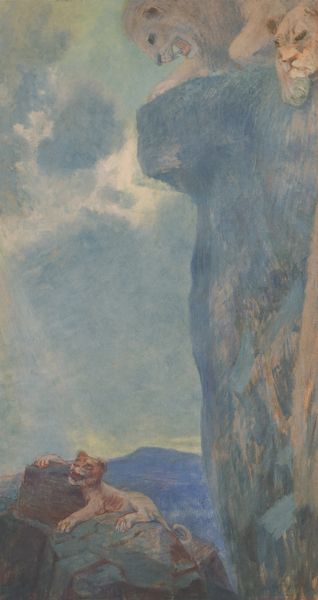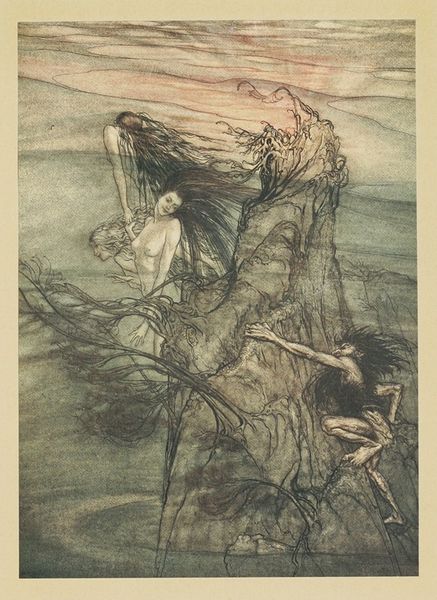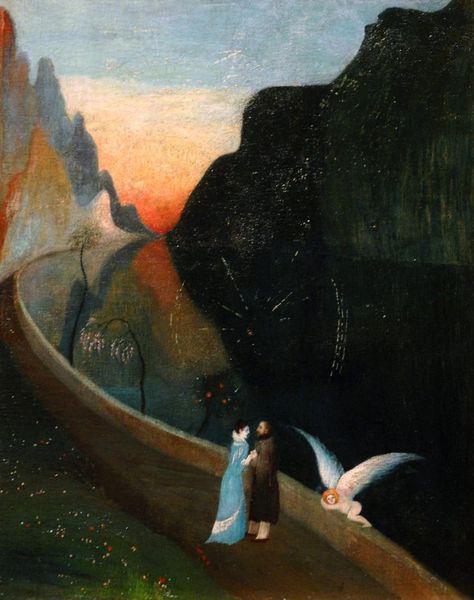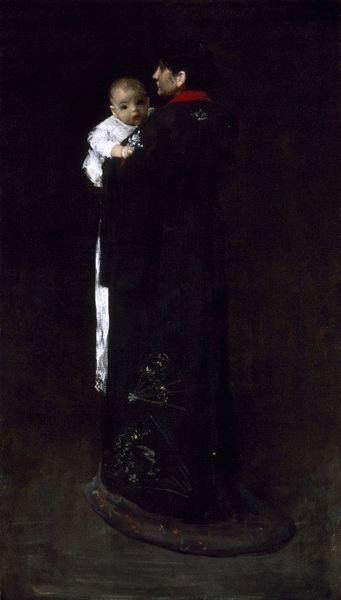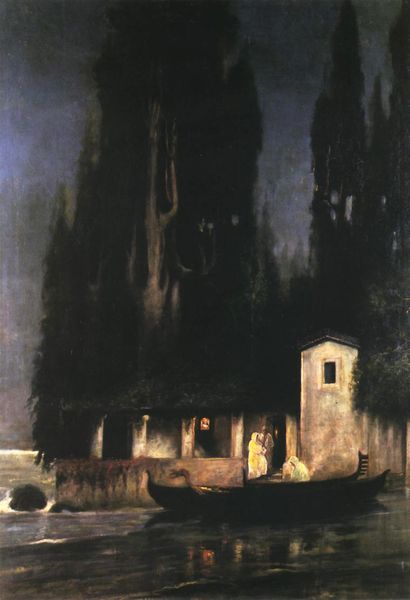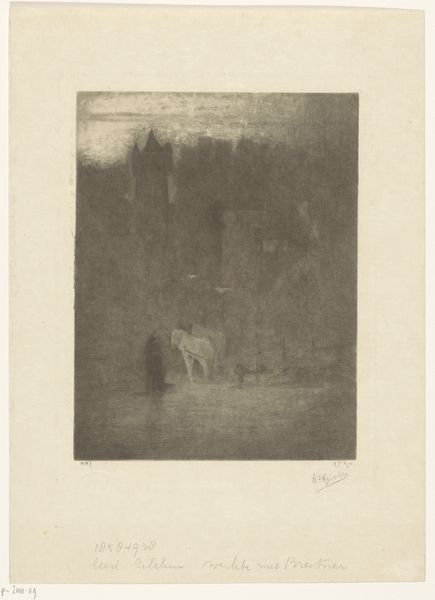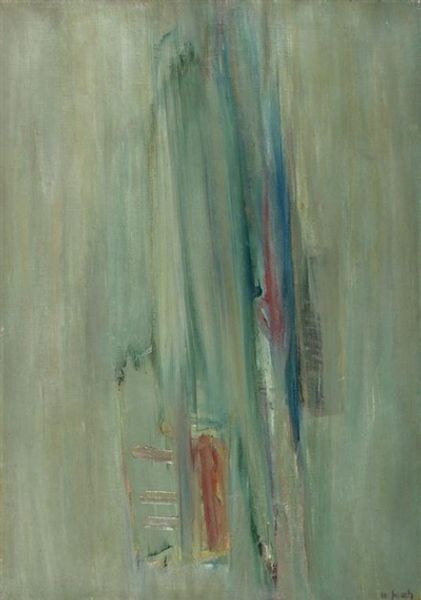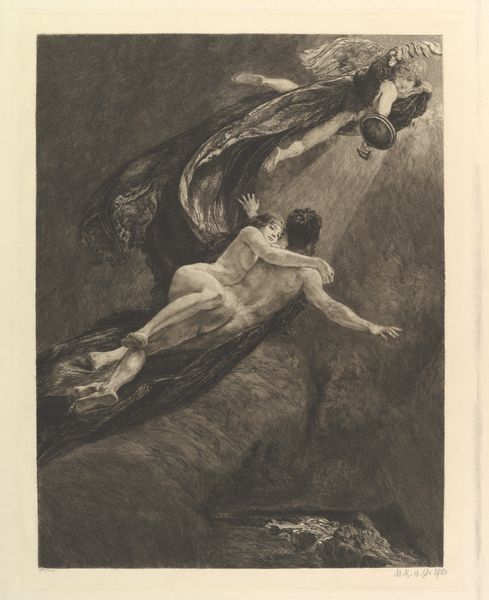
Dimensions: 71 x 49 cm
Copyright: Boleslas Biegas,Fair Use
Curator: Looking at Boleslas Biegas' "Leda," painted in 1928, you're immediately drawn into this almost dreamlike state. The use of oil on canvas brings a certain depth, but the atmosphere is heavy. Editor: Absolutely. The darkness is almost oppressive; the subjects seem to emerge hesitantly. Scale wise, this feels pretty intimate, doesn't it? Curator: It is rather, which adds to the intensity. Biegas was no stranger to mystical themes. His take here, rooted in the myth, hints at both the ethereal and the forbidden. The composition centers Leda in stark nudity alongside a swan, but the murky background creates a sense of foreboding, of being consumed. Editor: I see that the background nearly erases details, pushing everything to the fore. There is something unnerving in how those dark and textured masses dwarf the lighter subject in their geometry. It's also fascinating that the background flattens the scene even as the figures push forward into view, it causes such visual friction that adds to its captivating nature. What does Leda's gaze communicate to you? Curator: A complex mix, really. Perhaps a hint of reluctant acceptance or maybe even fear of the unknown. This isn't some romantic frolic; it’s loaded with an unsettling, almost Gothic, dread. Considering the period—just before the world was plunged into economic depression—one wonders if this imagery holds deeper allegorical weight regarding power and vulnerability. Editor: Fascinating. I appreciate that, beyond any literal interpretation, its evocative use of color and shadow, the calculated composition—really allows the painting to convey complex emotional tones effectively. There’s no easy resolution to what one sees and feels here. Curator: Exactly, it refuses to be neatly packaged. Biegas challenges our preconceived notions of the classical tale, imbuing it with disquieting personal and cultural reflections. It certainly lingers in the mind. Editor: Yes, a fascinating blend of aesthetic restraint and symbolic unease, leaving more unsaid than expressed, urging us to feel beyond what we know or expect.
Comments
No comments
Be the first to comment and join the conversation on the ultimate creative platform.

